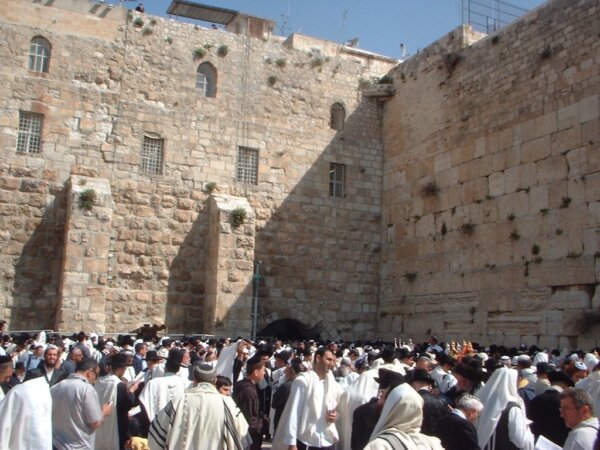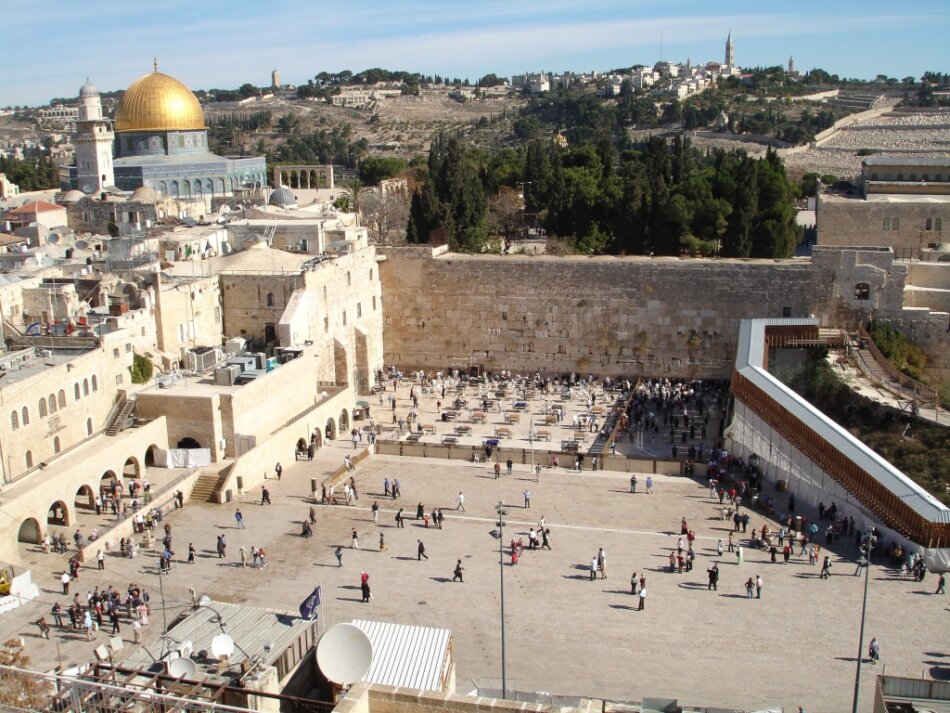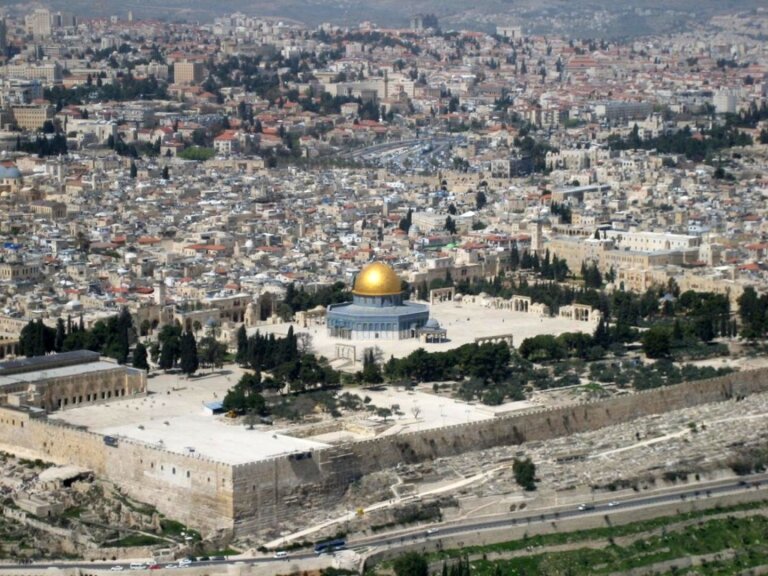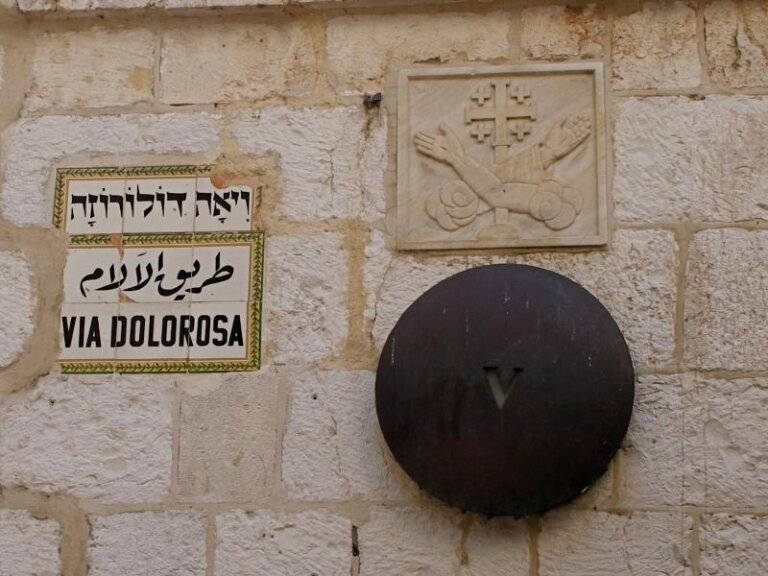The Western Wall or the Kotel, is the holiest site for the Jewish people in the world. Located in the Old City of Jerusalem, Israel, this historic site is what remains of the retaining wall of the Temple of Jerusalem, the first temple of the Jewish faith. This wall has been a place of pilgrimage and lamentation for centuries, as Jews flock there to mourn the loss of their holy temple.
The lower rocks of this wall, called ashlars, are a remnant of the Second Temple, built by Herod the Great. These rocks are so perfectly carved that they were placed one on top of the other without the use of mortar or any adhesive material. In the prayer section, it is common to see small pieces of paper with prayers rolled up and placed between the cracks of the rocks. In addition, it is possible to observe orthodox Jews and other worshippers reciting the entire book of Psalms.

The Western Wall is a popular tourist destination and is open to visitors of all religions and beliefs. Men should wear a hat or cap, or take one of the head coverings available at the entrance to the prayer area. Women may also take shawls and leg coverings. This section is divided by gender, thus preserving Orthodox Jewish traditions.
Adjacent to the women’s prayer area, one can see a part of the wall composed of smaller rocks, which originally belonged to the gate leading to the Temple Mount. To the south, rock fragments can be seen protruding from the wall, which were part of an arched stairway located above the market street. The plaza in front of the wall serves as a large open-air synagogue, where thousands of worshippers gather daily, and on special occasions religious services are held.
The Temple of Jerusalem was the spiritual and political center of the Jewish people for centuries. Its destruction in 70 AD by Roman troops marked the beginning of the Jewish Diaspora. Since then, the Western Wall has become a symbol of the perseverance and faith of the Jewish people. The faithful flock to this place to pray and ask for the rebuilding of the Holy Temple.
It is customary for visitors to the Western Wall to touch the rocks with their hands and pray in silence. Many write their prayers on pieces of paper and place them in the cracks between the rocks. This practice is based on the belief that this wall is a sacred place where prayers are heard directly by God.
The Western Wall has been the subject of numerous conservation and restoration efforts over the years. In addition, archaeological excavations have been carried out in the surrounding area to discover more about the history of the Temple of Jerusalem and the ancient city. These efforts have enabled researchers and the general public to learn more about the rich cultural and religious heritage of this sacred site.
Photographs by Golasso, Laika slips the lead, infliv, ProtoplasmaKid.



